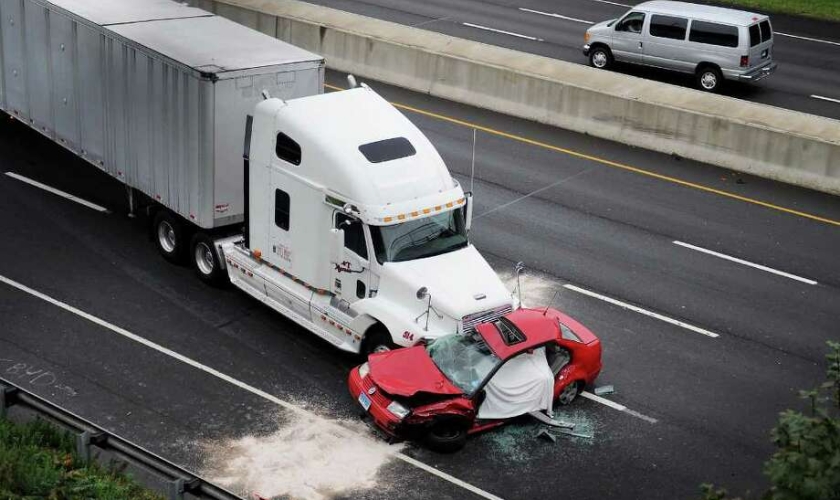
Car accidents are often chaotic events that leave victims dealing with physical injuries, emotional trauma, and financial burdens. In the aftermath, understanding your legal rights and obligations is crucial, particularly when it comes to filing a personal injury claim. One essential aspect of this process is being aware of the statute of limitations—a legal timeframe within which you must initiate legal proceedings. In the state of Missouri, the statute of limitations for car accidents is a critical factor that can significantly impact your ability to seek compensation. This comprehensive guide aims to shed light on Missouri’s car accident statute of limitations, providing you with the knowledge needed to protect your rights and make informed decisions in the aftermath of a collision.
The Basics of Statute of Limitations in Missouri
The statute of limitations serves as a legal deadline for filing a lawsuit. Once this period expires, the injured party may lose the right to seek compensation through the court system. In Missouri, the statute of limitations for car accidents is generally five years from the date of the incident. This means that legal action must be initiated within five years to preserve your right to pursue a claim for damages.
In Missouri, the time limit for initiating a personal injury claim is five years, as stipulated by Missouri Code section 516.120. This indicates that individuals must submit their claims within five years from the moment they become aware of the injury. You are required to file a police report within 30 days in the state of Missouri. However, it’s crucial to note that there are exceptions and nuances within this broad timeframe, depending on the specific circumstances of the case. Understanding these intricacies is essential for anyone who may be considering legal action following a car accident.
Factors Influencing the Statute of Limitations
While the general statute of limitations for car accidents in Missouri is five years, certain factors can alter this timeframe. It’s essential to be aware of these factors to ensure accurate assessment and timely action in pursuing a personal injury claim.
Discovery of Injuries: In some cases, injuries resulting from a car accident may not become apparent immediately. Missouri law recognizes this, allowing for an extended statute of limitations from the date of injury discovery rather than the date of the accident. This is particularly relevant for cases involving latent injuries or delayed symptoms.
Government Entities: If a government entity is involved in an accident, such as a city bus or government-owned vehicle, special rules may apply. The injured party may need to provide notice to the government entity within a shorter time frame before pursuing legal action, adding a layer of complexity to the process.
Minor Victims: When a minor is involved in a car accident, Missouri law extends the statute of limitations until the minor reaches the age of 21. This is designed to protect the rights of individuals who may not be in a position to file a claim on their behalf due to their age at the time of the accident.
Consequences of Missing the Statute of Limitations
Loss of Legal Recourse
Missing the statute of limitations essentially closes the legal door to seeking compensation for injuries sustained in a car accident. These statutory timelines bind courts, and once the window of opportunity closes, it is exceptionally challenging to reopen. The injured party loses the right to pursue a legal remedy for the damages suffered, irrespective of the merit of their case.
Insurance Company Defenses
Insurance companies are adept at exploiting legal technicalities to their advantage. If a claim is filed outside the statute of limitations, it provides insurers with a powerful defense against the claim. They are likely to cite the expiration of the statutory timeframe as grounds to deny the claim outright, leaving the injured party without recourse. This underscores the importance of being proactive and initiating legal proceedings well within the prescribed timeframe.
Financial Responsibility Shifts
When a car accident occurs, the responsible party or their insurance is generally liable for covering the damages. However, if the statute of limitations expires, the financial responsibility for medical bills, property damage, and other losses shifts entirely to the injured party. It can lead to a substantial financial burden, especially if the injuries require ongoing medical treatment or result in long-term consequences.
Diminished Credibility of Claims
Courts place a premium on timeliness and adherence to legal procedures. Failing to meet the statute of limitations may result in skepticism from the court regarding the legitimacy of the claim. Judges and juries may question why the injured party did not take timely action, potentially diminishing the credibility of the case. This can make it more challenging to secure a favorable outcome even if the injuries and damages are well-documented.
Navigating the Legal Process: Steps to Take Within the Statute of Limitations
Seek Medical Attention Promptly
The foremost priority after a car accident is your health and well-being. Even seemingly minor injuries can have long-term consequences, so seeking medical attention promptly is crucial. Beyond the obvious health benefits, obtaining medical care establishes a clear link between the accident and your injuries, creating a documented record that can be pivotal in your personal injury claim. Delaying medical treatment not only jeopardizes your health but can also complicate the legal process.
Gather Comprehensive Evidence
Building a robust case requires a thorough collection of evidence from the accident scene. Take photographs of the vehicles involved, the surrounding area, and any visible injuries. Collect witness statements and contact information, as well as any available surveillance footage. Car accident lawyers offer initial consultations to assess the details of the case. During this consultation, they provide legal advice and inform clients about their rights and potential courses of action. If applicable, document road conditions, weather, and any other factors that may have contributed to the accident. The more comprehensive your evidence, the stronger your case may be when pursuing compensation.
Notify Your Insurance Company
Promptly notify your insurance company about the accident, even if you believe the other party is at fault. Cooperation with your own insurance company is a contractual obligation, and timely notification is typically a requirement under your policy. Be cautious about providing recorded statements without legal advice, and avoid admitting fault until the full details of the accident are clear.
Navigating the aftermath of a car accident can be overwhelming, but understanding Missouri’s car accident statute of limitations is a crucial step in protecting your rights. By being aware of the legal timeframe within which you must act, you empower yourself to make informed decisions and seek the compensation you deserve. Remember, time is of the essence in personal injury cases. Act promptly, seek legal advice, and take the necessary steps to build a strong case within the statute of limitations. In doing so, you increase your chances of a favorable outcome and ensure that justice is served. In the complex landscape of personal injury law, knowledge is your greatest ally. Arm yourself with information, and don’t let the statute of limitations catch you off guard. Your rights matter—protect them.




